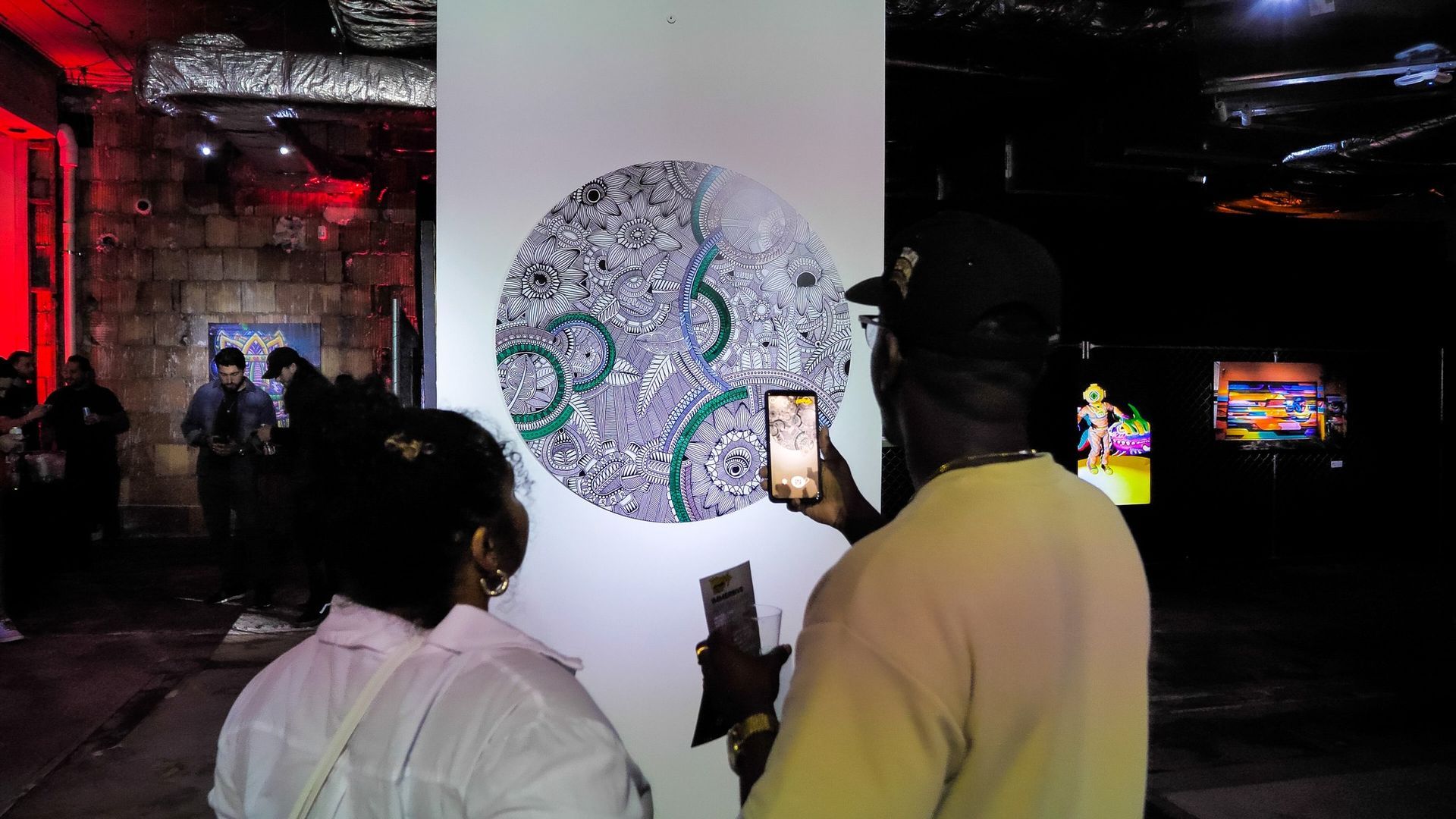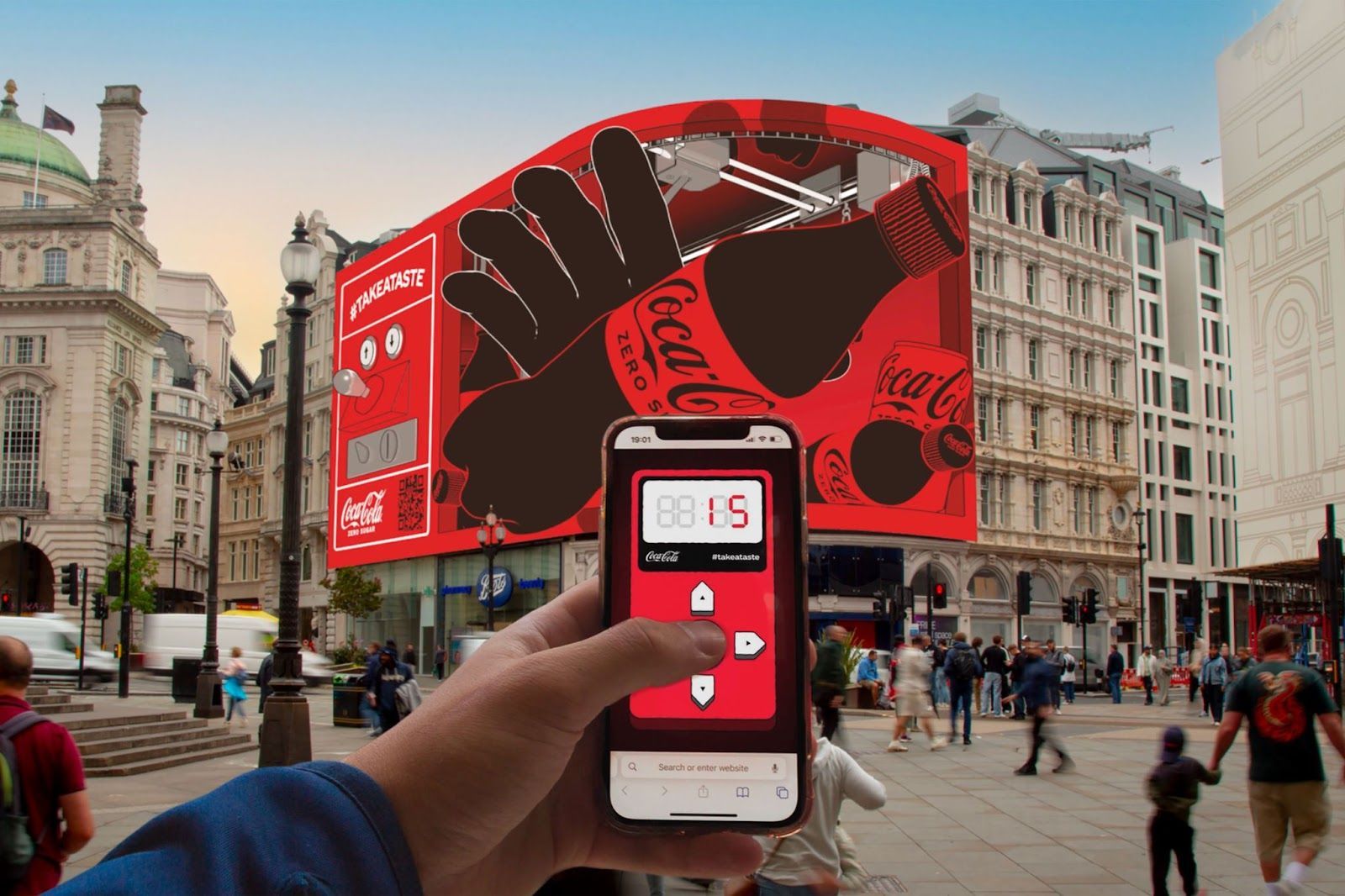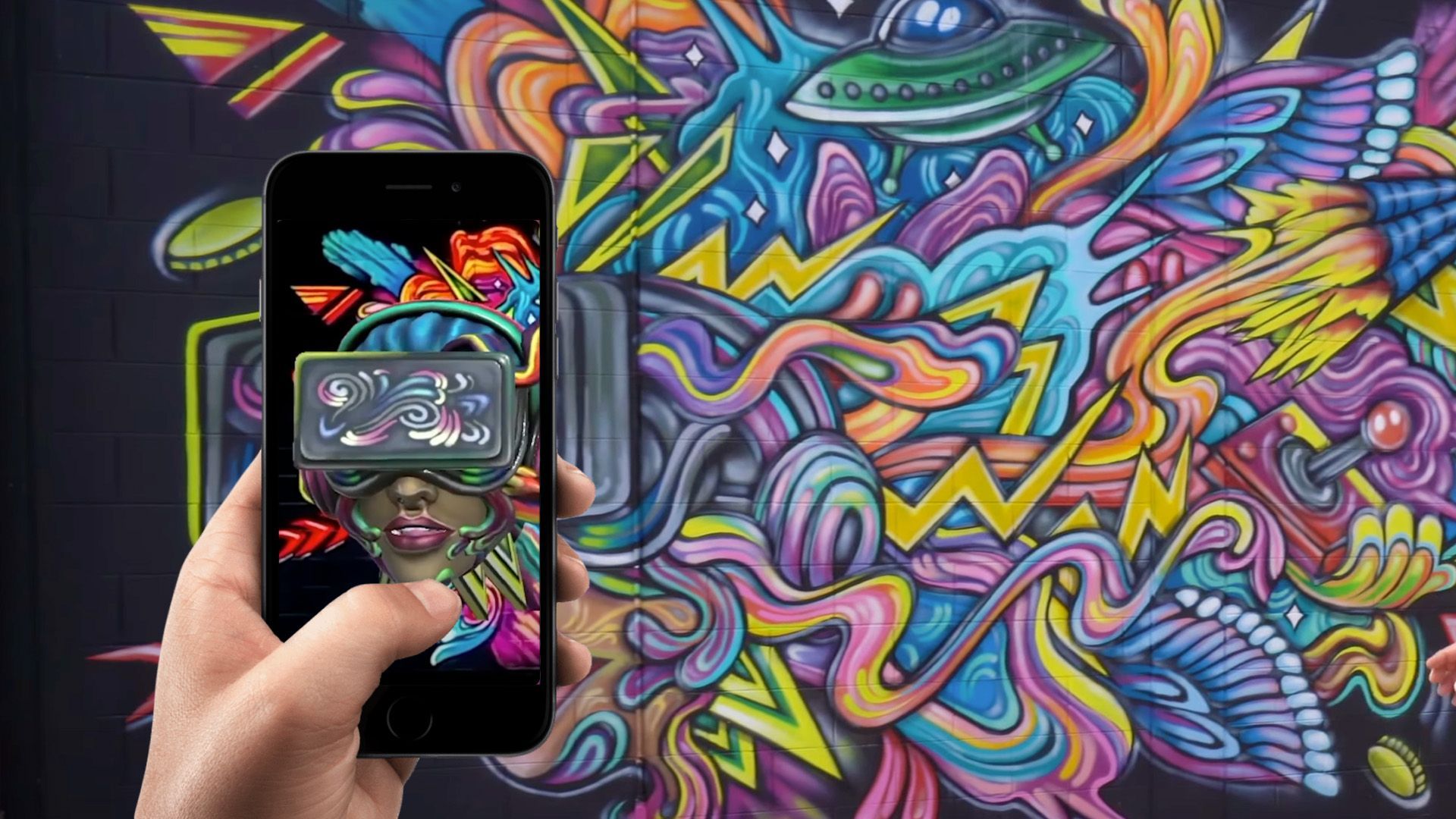How AI is Enhancing Immersive Experiences
In this article, we'll take a closer look at how AI is enhancing our interactions across different industries, bringing exciting changes to gaming, education, events, and even our everyday lives. This comprehensive analysis builds upon our research into AI-powered personalization at scale and complements our insights on how generative AI is transforming marketing, demonstrating the convergence of artificial intelligence with immersive brand experiences across multiple sectors.
The Convergence of AI and Immersive Technologies
The fusion of AI with immersive technologies has led to smarter, more adaptive environments that react in real time to user behavior. Advanced AI algorithms process vast amounts of data—ranging from user preferences to real-world sensor inputs—to dynamically adjust virtual scenes and narratives. This synergy creates a more engaging user experience and personalizes content delivery, making each interaction unique. These personalization principles directly apply to conversational AI implementations in customer service and sales environments, where real-time adaptation improves satisfaction and conversion rates. Similarly, our 2025 Metaverse Marketing Strategies leverage these AI-driven personalization capabilities to create compelling brand experiences in virtual environments.
Developers can create digital environments that learn and evolve by integrating machine learning, natural language processing (NLP), and computer vision into immersive systems. For example, video game AI-driven non-player characters (NPCs) can now respond to players with natural dialogue, adaptive behaviors, and context-specific actions. This responsiveness level transforms traditional, scripted interactions into dynamic, lifelike engagements.
Transforming Gaming with AI
Intelligent NPCs and Adaptive Gameplay
In video games, immersive experiences are no longer confined to pre-written dialogue and fixed scenarios. Thanks to AI, NPCs can now generate dynamic responses based on players’ actions. Generative AI models and adaptive behavior algorithms allow these characters to “learn” from gameplay, tailoring their responses and strategies accordingly.
- Enhanced NPC Dialogue: AI-powered NPCs are capable of engaging in real-time conversation with players. By utilizing natural language generation (NLG) and deep learning, these characters can provide hints, share lore, or even engage in branching narratives that evolve as the player progresses.
- Dynamic Difficulty Adjustment: AI analyzes player performance in real time and adjusts game difficulty accordingly. This ensures that challenges remain engaging without overwhelming the player, leading to a balanced and immersive gaming experience.
- Procedural Content Generation: AI algorithms generate in-game assets such as levels, quests, and even music. This procedural content generation means that no two playthroughs are exactly the same, significantly boosting replayability and immersion. Similar AI-driven content creation principles enable innovative marketing campaigns through AR murals and AR billboards, where algorithms generate personalized visual experiences based on viewer demographics, time of day, or environmental conditions, creating unique brand interactions for each audience encounter.
Case Study: AI in Modern Gaming
Several studios have begun experimenting with AI-enhanced NPCs to create more lifelike game worlds. For instance, some developers now integrate platforms that enable characters to react spontaneously—responding to unexpected player actions, altering their dialogue on the fly, and even engaging in emergent behaviors that mirror human-like improvisation. This evolution is making open-world and role-playing games far more interactive and believable.
AI-Powered Immersive Learning and Training
Revolutionizing Education with XR
Immersive learning experiences are being redefined by AI-powered VR and AR systems. These systems provide learners with interactive simulations that can mimic real-life scenarios, ranging from medical procedures to historical recreations. AI enhances these environments by personalizing the content, tracking progress, and even predicting areas where learners might struggle.
- Personalized Learning Paths: AI can analyze a student’s performance and adapt the training material in real time. For example, if a trainee in a VR surgical simulation encounters difficulties, the system can adjust the scenario to provide targeted feedback or additional practice opportunities.
- Simulated Real-Life Scenarios: Immersive simulations allow learners to practice complex tasks in a controlled environment. AI-powered virtual instructors can guide the user, provide instant feedback, and ensure that the experience remains safe and highly realistic.
- Engaging and Adaptive Content: By incorporating AI, educational platforms can create dynamic learning experiences that change based on the learner’s input. This makes learning more engaging and effective, as content is continuously optimized to meet individual needs.
Real-World Applications
Many institutions and companies are now using AI-enhanced immersive learning to train employees in critical fields. For instance, immersive training modules for first responders, pilots, and medical professionals are becoming increasingly sophisticated. Our research on
manufacturing efficiency with AR and VR applications documents how industrial companies deploy these AI-enhanced training systems to improve safety, reduce errors, and accelerate skill development. These implementations demonstrate measurable ROI through reduced training costs and improved operational outcomes, validating the business case for AI-immersive learning investments.

Immersive Events and Digital Experiences
Creating Unforgettable Immersive Events
Immersive events are transforming the way brands interact with audiences by blending physical and digital realities. Through technologies like projection mapping, holography, and AI-driven content, event organizers are crafting experiences that captivate and inspire.
- AI-Enhanced Visuals and Narratives: AI algorithms analyze audience reactions and can dynamically modify visual displays in real time. This creates a responsive environment where the experience evolves as the event unfolds.
- Personalized Engagement: Attendees can interact with AI-powered digital assistants or chatbots that offer personalized recommendations or guide them through various event features. Such interactive elements heighten engagement and leave lasting impressions.
- Interactive Storytelling: By leveraging AI, immersive events can incorporate branching narratives where the audience’s collective input influences the storyline. This form of participatory design ensures that every event feels unique and tailored to its audience.
Case Example: Immersive Landmark Transformations
A recent multimedia show in London showcased the transformative power of AI. Iconic landmarks were projected with immersive visuals that narrated the evolution of human innovation—from the Stone Age to a future defined by AI. Commissioned by a major tech brand, the event used advanced projection mapping and holographic displays to captivate tourists and emphasize AI’s growing influence on everyday life. Such events entertain and educate audiences on the potential of AI-enhanced immersive experiences.
AI and Immersive Customer Experiences
Elevating Brand Storytelling with AI
Brands are increasingly using AI to craft immersive digital narratives that go beyond traditional marketing. These AI-powered storytelling approaches extend to retail environments through AR mirrors in beauty retail, where personalized recommendations and virtual try-on experiences create compelling brand narratives. Our comprehensive 2025 Augmented Reality in Retail & E-Commerce Research Report examines how AI-driven personalization increases conversion rates and customer satisfaction across retail categories.
- Narrative-Driven Websites: Companies are launching AI-powered websites that abandon conventional navigation in favor of storytelling. These sites use AI tools to interact with users, answer questions, and guide them through a brand’s history and philosophy in a deeply engaging way. Brunello Cucinelli’s new AI-powered website, is an example that integrates immersive visuals and interactive dialogue to present its cultural narrative.
- Personalized Shopping Experiences: AI is revolutionizing e-commerce by providing customers with personalized recommendations based on their browsing history and real-time interactions. When combined with AR, customers can virtually try on products or visualize how items would look in their homes before making a purchase.
- Enhanced Customer Support: AI-driven virtual assistants can offer round-the-clock support, answering customer queries with natural, context-aware responses. This improves the overall customer experience and builds long-term brand loyalty.
The Future of AI in Immersive Customer Engagement
As companies continue to invest in AI technology, the boundaries between digital and physical experiences will further blur. Imagine stepping into a retail space where every interaction is guided by an AI assistant who helps you find the perfect product and tailors the environment to your preferences—from lighting and music to personalized promotions. Such experiences have the potential to transform customer engagement and drive new levels of brand interaction.
Advancements in AI for Extended Reality
The Role of AI in Augmented and Mixed Reality
Extended reality (XR), which encompasses VR, AR, and mixed reality (MR), is experiencing a significant boost from AI. With enhanced object recognition, real-time data processing, and contextual analysis, AI allows XR devices to offer unparalleled levels of interactivity.
- Object and Scene Recognition: AI systems can analyze real-world scenes to identify objects and provide contextual information in real time. This capability powers next-generation smart glasses experiences, where AI provides contextual information about surroundings, translates text, or offers product information through visual recognition. The integration of AI with consumer AR devices demonstrates the trajectory toward ubiquitous immersive computing, where intelligence augments rather than interrupts daily activities.
- Natural User Interfaces: AI-powered gesture and voice recognition allow users to interact more naturally with XR environments. Whether pinching to zoom or asking a digital assistant for directions, these intuitive interfaces remove traditional barriers to engagement.
- Enhanced Spatial Audio: AI is also being used to improve spatial audio in XR. By analyzing the environment and adjusting sound cues based on user movements, AI creates a more immersive and realistic auditory experience.
Innovations in Smart Glasses and XR Headsets
Recent advances in smart glasses and mixed-reality headsets highlight the potential of AI in everyday immersive experiences. For example, Google’s upcoming AI-powered smart glasses combine advanced eye and hand tracking with a natural language assistant to provide contextual information and interactive features—all while seamlessly blending the digital and physical worlds. These devices promise to transform how we access information, communicate, and interact with our surroundings, making immersive experiences more accessible than ever.
Ethical Considerations and Challenges
Balancing Innovation with Responsibility
While the benefits of AI-enhanced immersive experiences are clear, important ethical and practical challenges must also be addressed. As AI becomes more integrated into our daily lives, ensuring transparency, security, and fairness is paramount.
- Data Privacy and Security: Immersive experiences often require the collection and processing of personal data. To protect user information, developers must implement robust encryption, access controls, and on-device processing.
- Bias and Fairness: AI systems can inadvertently perpetuate biases in their training data. Therefore, it is essential to continuously audit and update these systems to ensure they provide equitable experiences for all users.
- User Trust and Transparency: As AI begins to drive more immersive interactions, users must understand how their data is being used and how decisions are made. Clear communication and user-friendly consent processes are critical for building trust.
Addressing Technical and Societal Challenges
Alongside ethical concerns, technical challenges remain in creating truly immersive AI experiences. Developers continue to address issues such as high processing demands, network latency, and the need for seamless integration across platforms. Additionally, as AI becomes a more pervasive part of immersive environments, society must grapple with the implications for employment, creative ownership, and digital well-being.
The Future of Immersive Experiences: What’s Next?
Emerging Trends in AI and Immersive Technology
Looking ahead, the evolution of AI and immersive technologies promises to bring even more exciting developments:
- Generative AI for Real-Time Content Creation: As generative models become more sophisticated, AI will be able to create custom immersive content on the fly. This capability revolutionizes generative AI in marketing, where brands create personalized campaigns that adapt to individual preferences and contextual factors. For marketing teams exploring these possibilities, our AR creation platform provides hands-on experience with AI-enhanced content generation tools, enabling experimentation with dynamic, personalized immersive experiences.
- AI-Driven Multisensory Experiences: Future immersive experiences may engage sight and sound, touch, taste, and smell. Advances in haptic feedback and sensory augmentation will allow AI to create multisensory environments that are nearly indistinguishable from reality.
- Integration of the Internet of Senses (IoS): The concept of the Internet of Senses—where digital interactions trigger multisensory responses—could revolutionize how we interact with digital content. AI will play a crucial role in managing and synchronizing these complex interactions.
- Enhanced Collaboration in Virtual Workspaces: AI-enhanced virtual workspaces will provide more natural and immersive environments for collaboration. From digital whiteboards to virtual meeting rooms that adapt to participant behavior, AI will help bridge the gap between physical and virtual offices. These workplace transformation principles align with manufacturing efficiency improvements through AR/VR training and collaboration tools, demonstrating AI's role in enhancing productivity across both knowledge work and industrial applications.
Preparing for an Immersive Future
Adaptability is the key to success for developers and end-users in this evolving landscape. Companies must invest in research and development to stay ahead of technological trends, while users must remain informed about how these innovations affect their privacy, security, and overall well-being.
Educational institutions and industries alike are now incorporating AI-enhanced immersive learning into their training programs. This trend prepares the workforce for future challenges and drives innovation across multiple sectors. As immersive technologies become more prevalent, cross-disciplinary collaboration will be essential to harness their full potential.
Conclusion
Artificial intelligence is rapidly transforming immersive experiences by infusing digital environments with unprecedented levels of interactivity, personalization, and realism. From revolutionizing gaming with adaptive NPCs and procedural content generation to enhancing immersive learning through personalized training modules, AI is paving the way for a new era of digital engagement.
Immersive events, augmented reality, and smart devices are all converging to create a future where our physical and digital lives blend seamlessly. As AI continues to evolve, it will redefine how we consume content and interact with our environment, collaborate at work, and even navigate our daily routines.
Yet, alongside these exciting opportunities lie significant ethical and technical challenges. Ensuring data privacy, preventing bias, and maintaining transparency are essential for fostering user trust in these new technologies. By addressing these issues head-on, developers and companies can create immersive experiences that are innovative, and engaging but also responsible, and secure.
The future of immersive experiences is bright, with AI driving a wave of innovations that will transform everything from entertainment and education to customer engagement and remote work. Whether you are a gamer, a student, or a professional navigating digital workspaces, the integration of AI into immersive technologies promises to open new horizons for creativity, collaboration, and personalization.
Embrace the transformation and prepare to be immersed in a world where AI brings virtual spaces to life—one interaction at a time.
TALK TO A PRO
We're here to bring your brand to life!
Stay Connected with BrandXR
Create Augmented Reality for Free!
Create, Publish, and Measure 3D Augmented Reality Experiences Without Having to Code.














